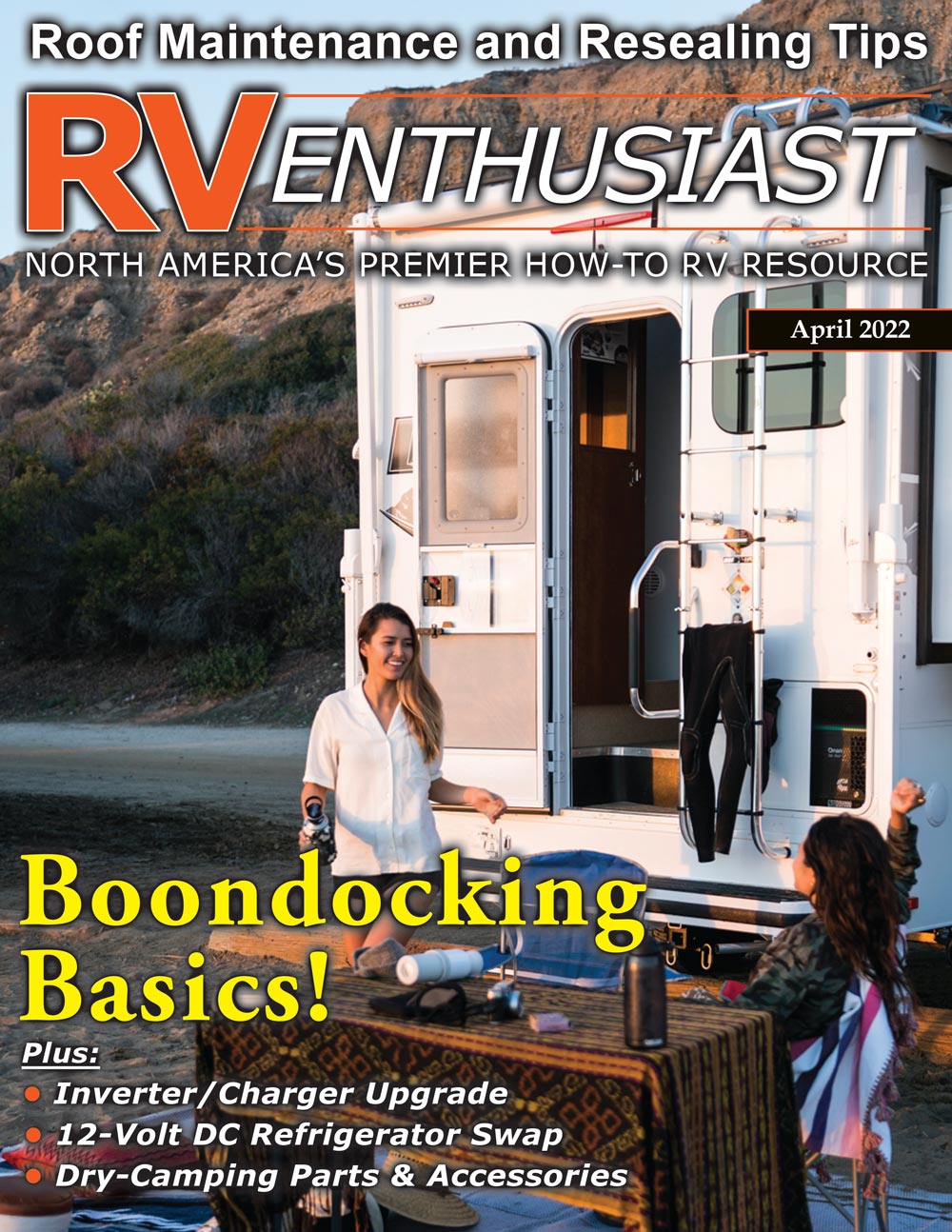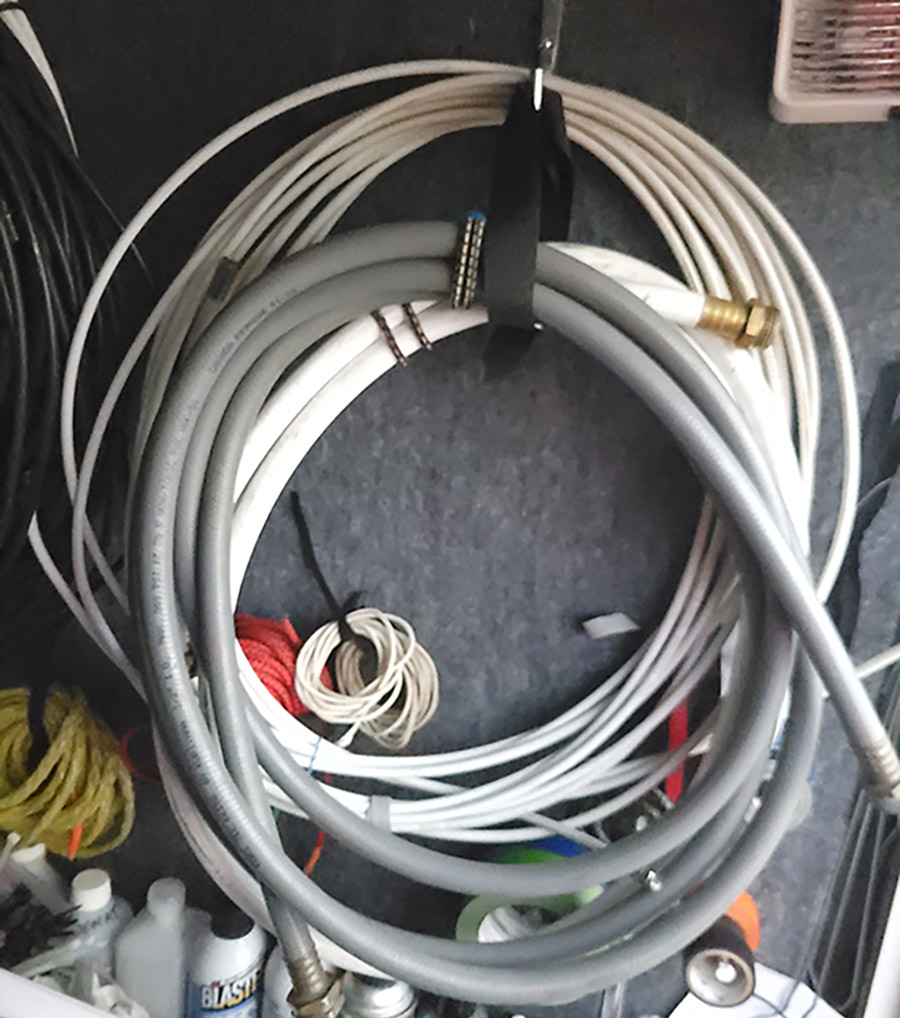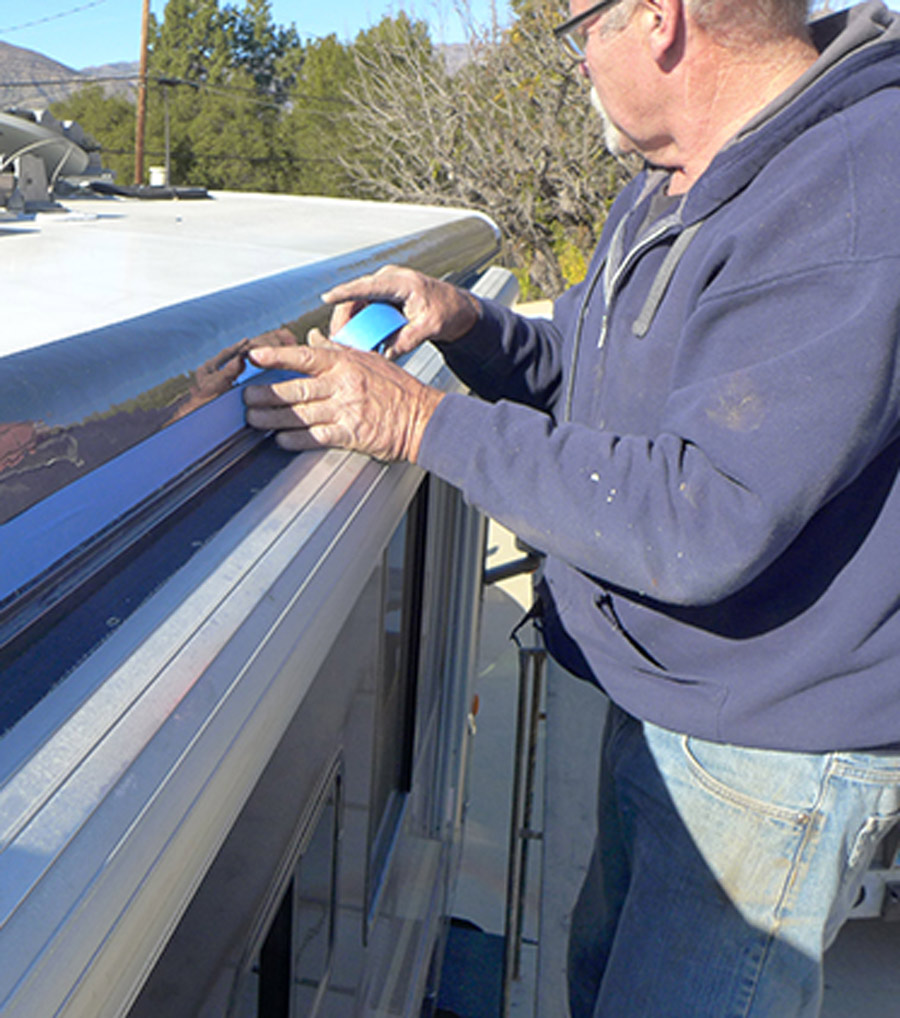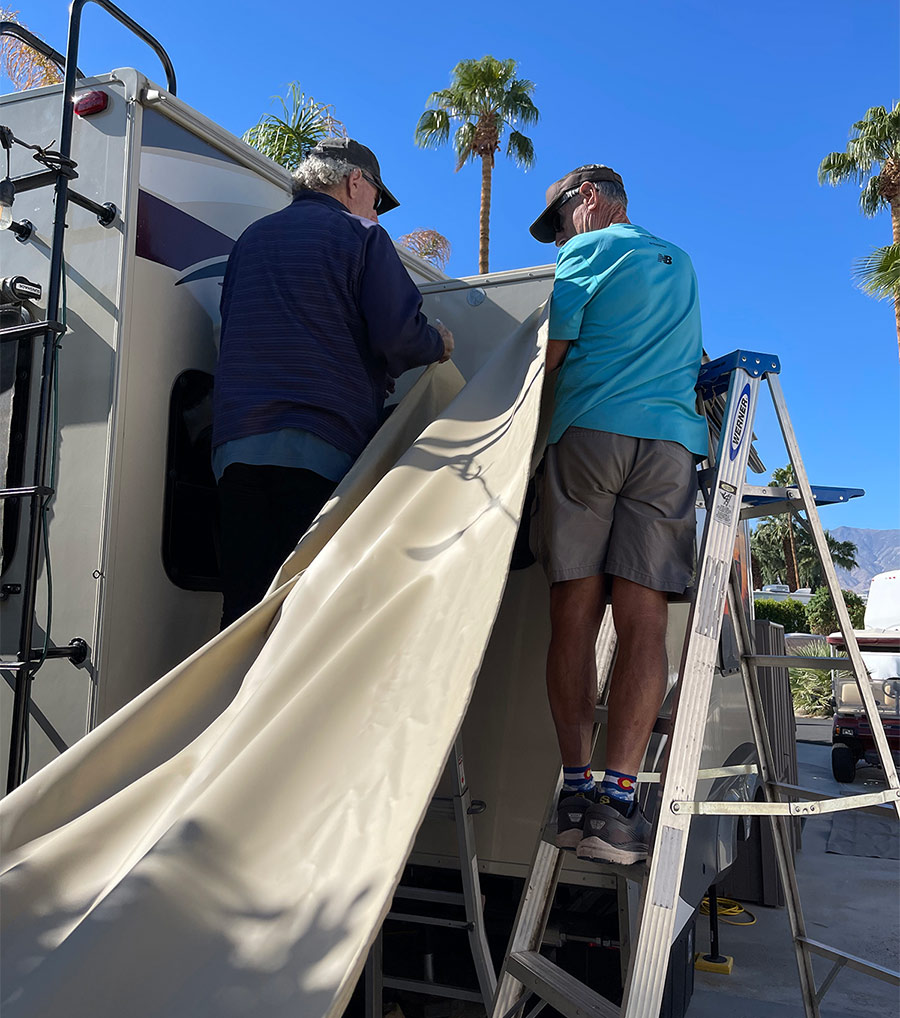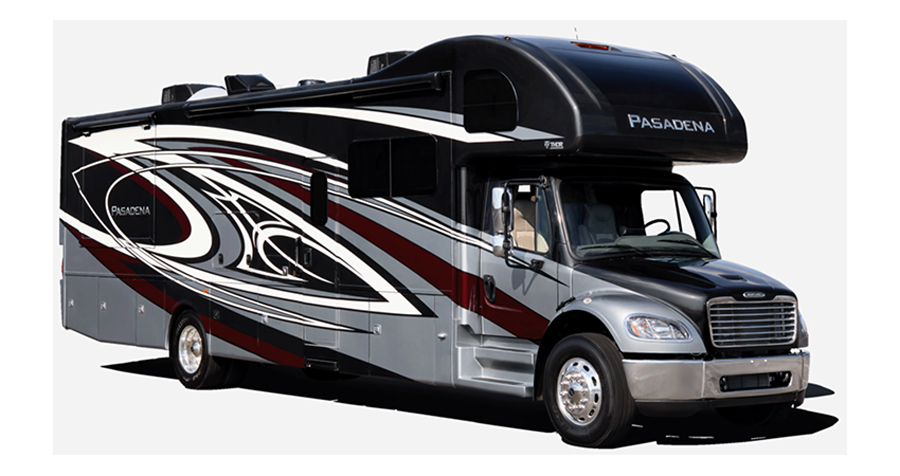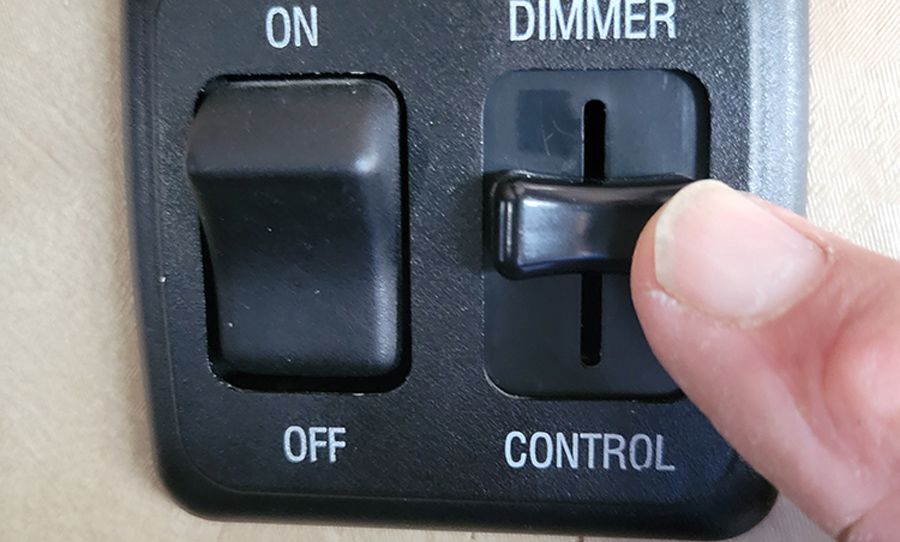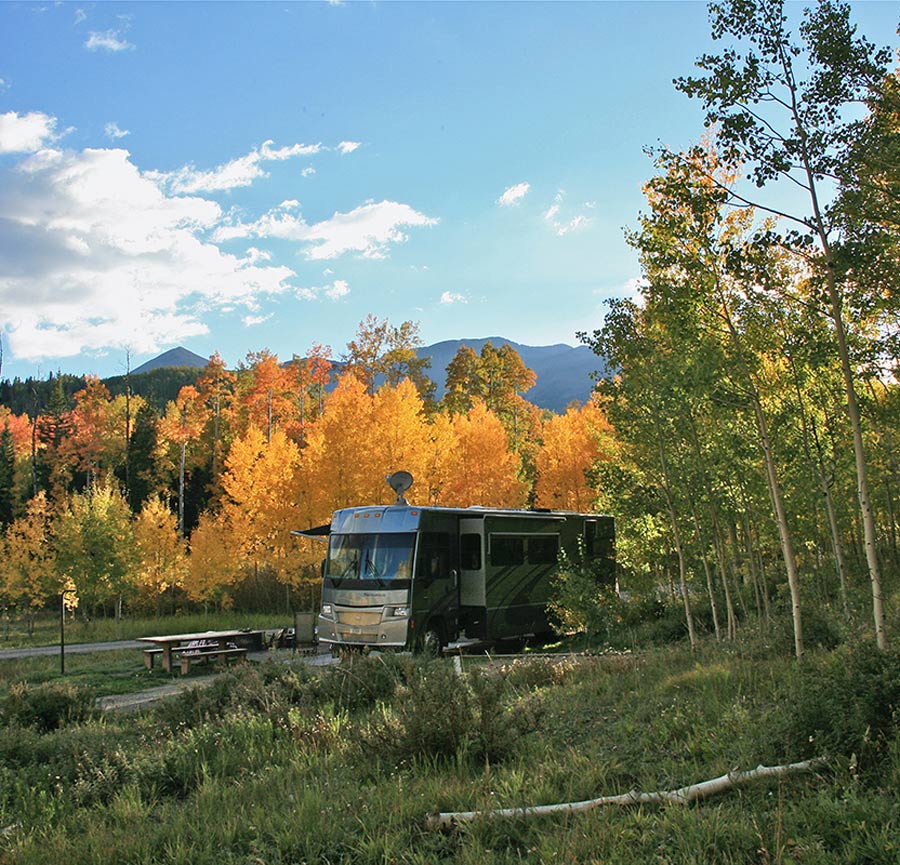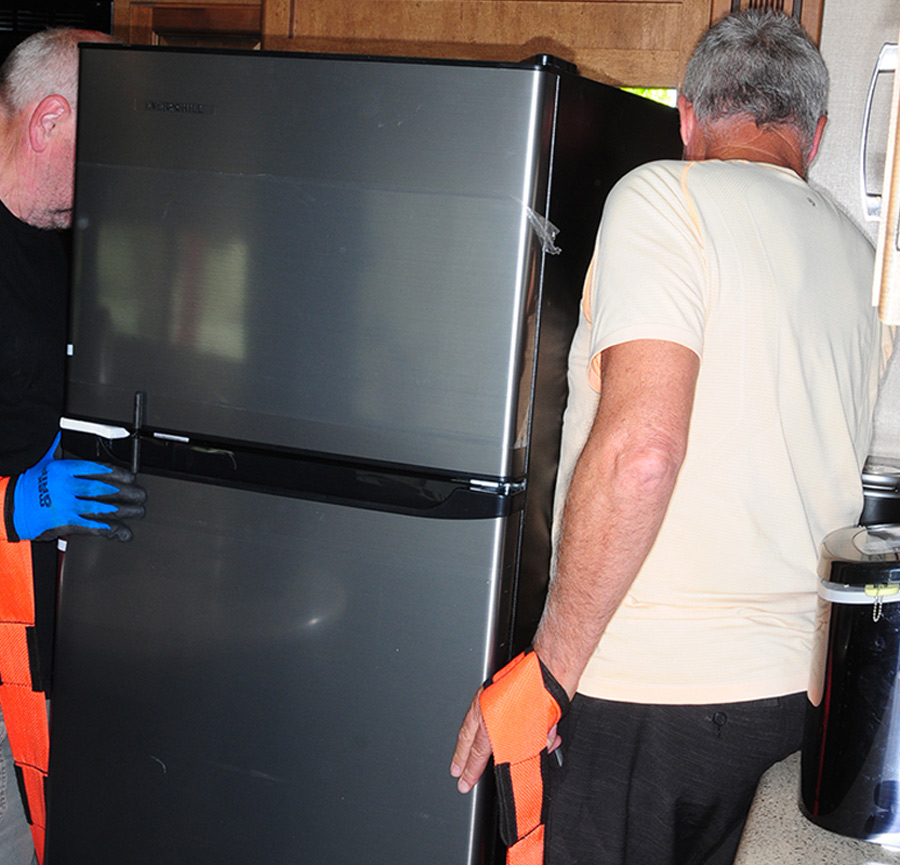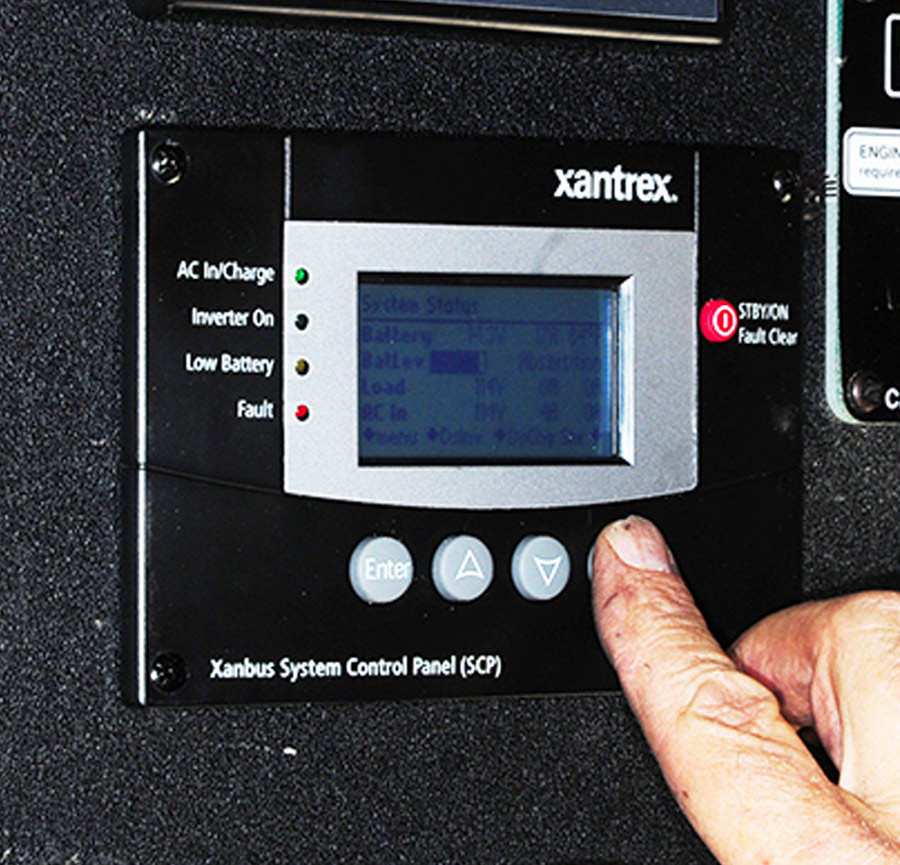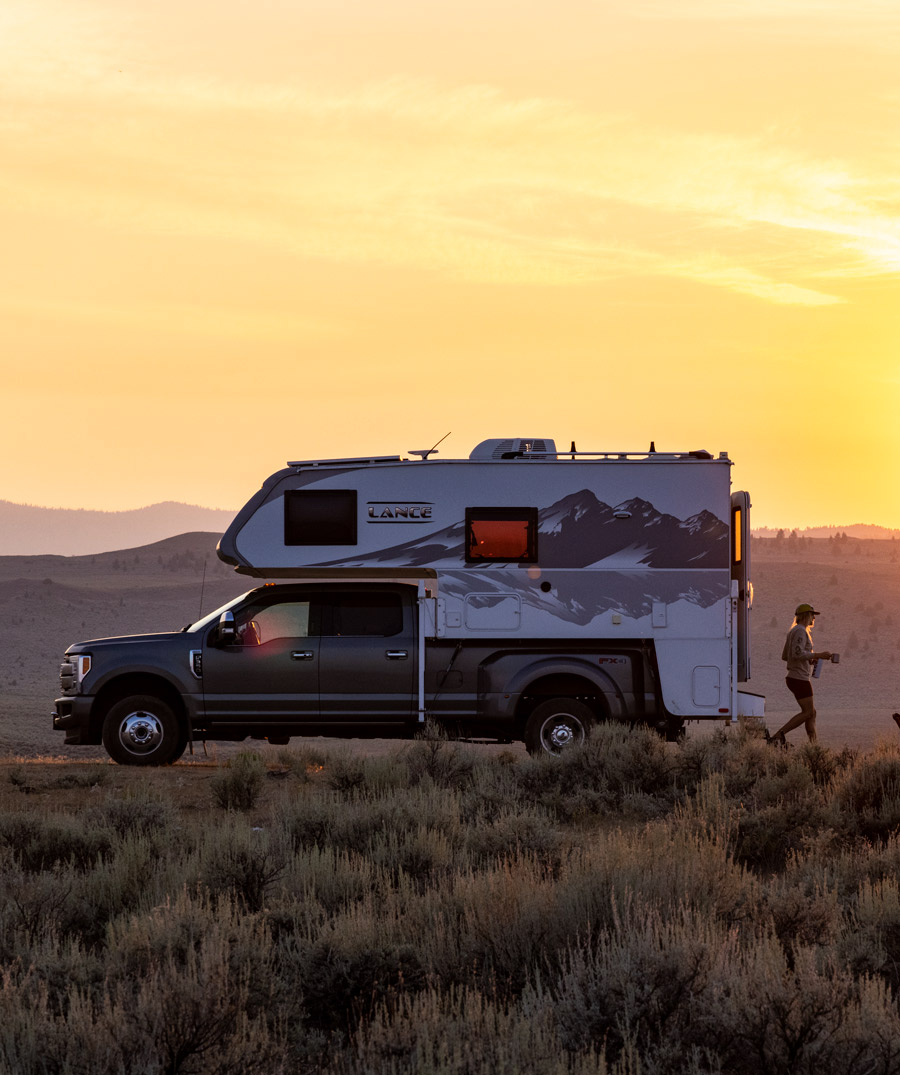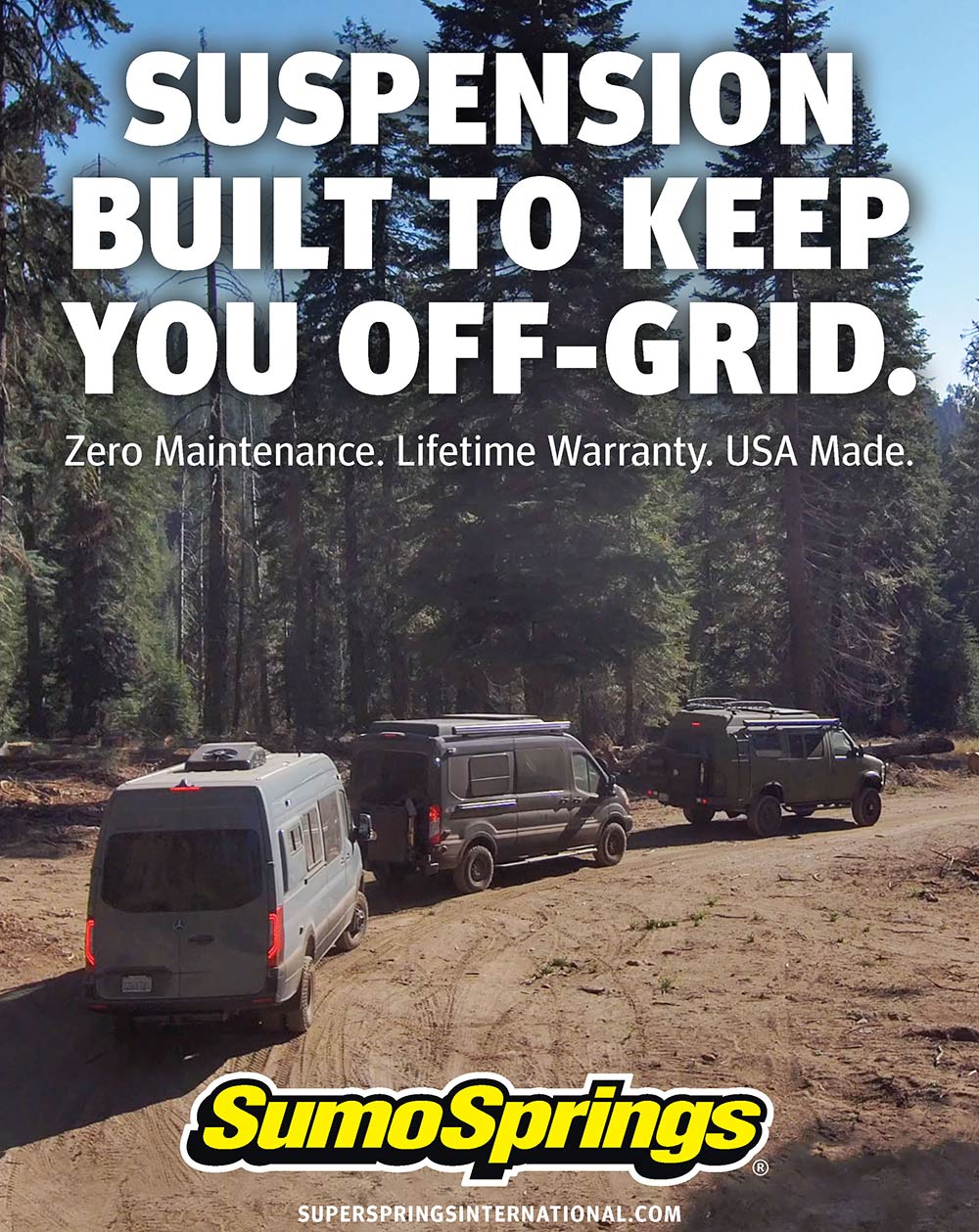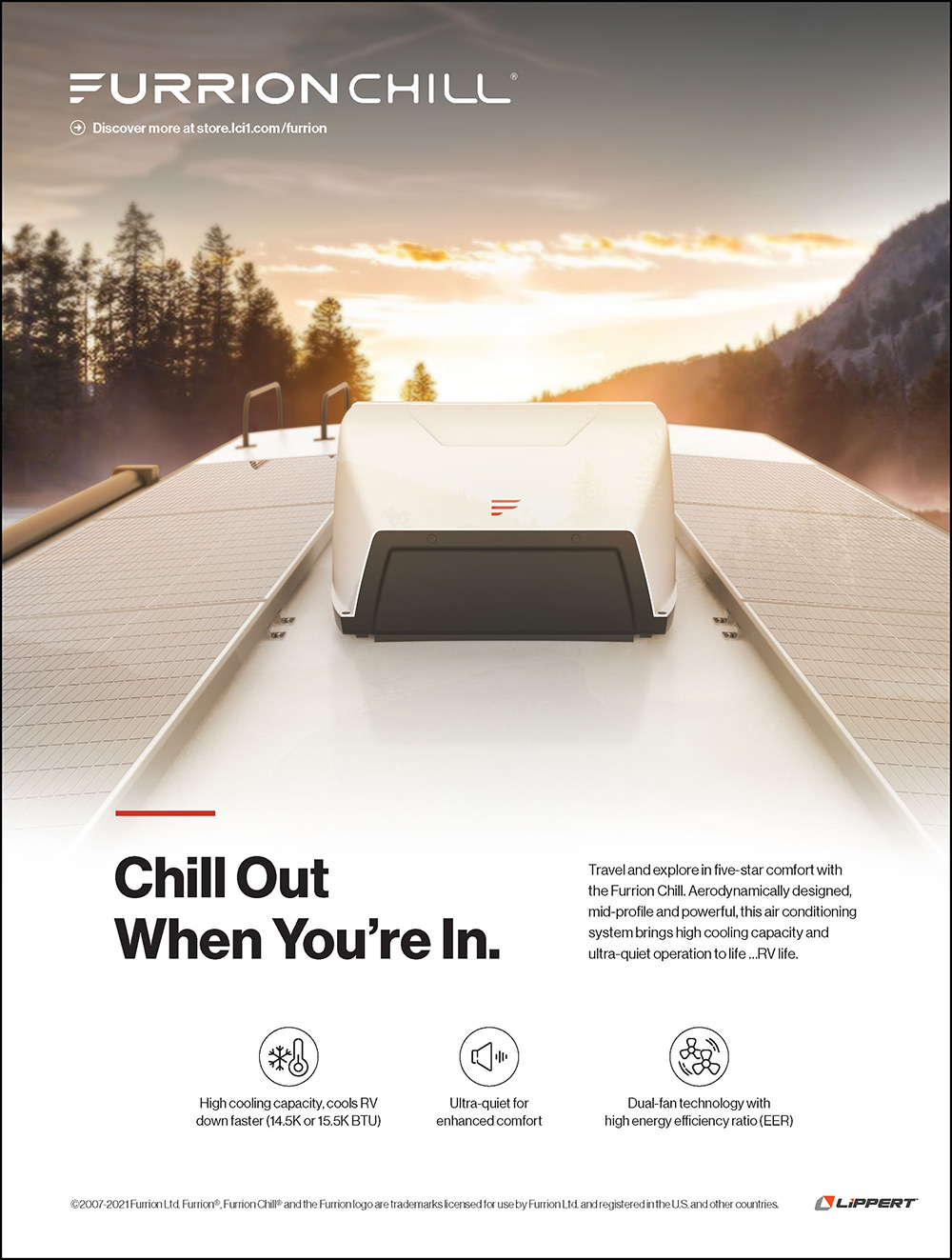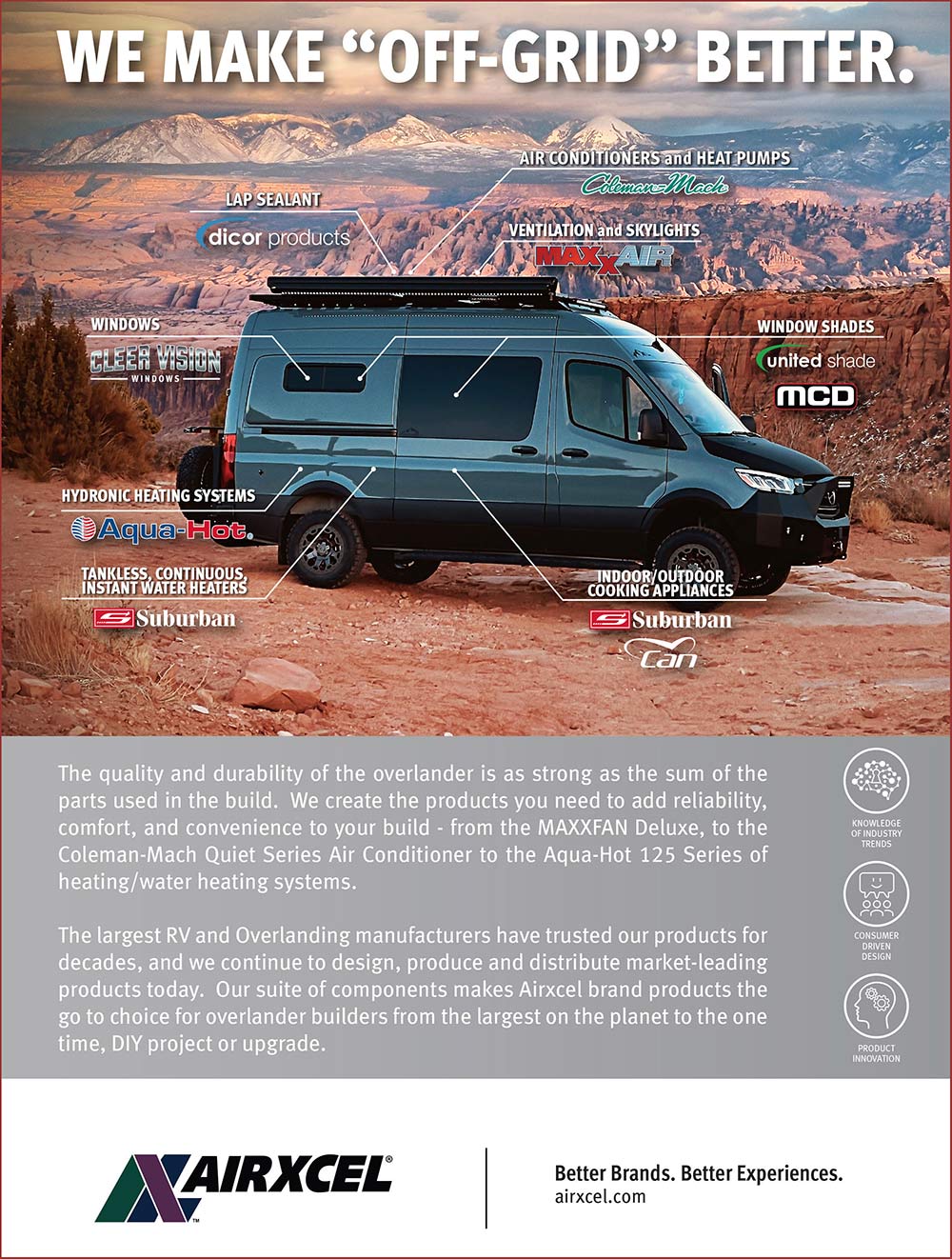Subscriber Access Only
Special Offer
Get 1 year of RV Enthusiast Magazine for just $9.99
Unlock My Offer No ThanksAlready a subscriber? Click here to access full issues.

Need to hang something on the walls of your RV? Self-drilling drywall anchors provide a secure foundation when other fasteners have pulled out of a wall. Another option for keeping things secure while on the move? Quake Hold Museum Putty has proven adept at keeping items in place while traveling — especially heavy items on tables and shelves.
An annual roof inspection — you do one, don’t you? — will likely reveal trouble spots where water can (and usually will) find its way into your RV, leading to dry rot and mold. Resealing any breach before it becomes problematic will keep expensive repairs at bay — and we show how to do exactly that, using the correct materials and tools (including one you didn’t think of).
Slide-out toppers have proven to be a lifesaver when it comes to keeping water, leaves and debris off the top of the room extension — but they aren’t invulnerable to time and the elements. It’s not a question of “if” they will eventually wear out, but “when.” Here’s how to repair the material without having to replace the entire mechanism.
The former longtime publisher of Trailer Life magazine — and a proponent of dry camping long before it became a trend — offers up some suggestions for novice boondockers based on decades of experience. Yes, it’s a “primer” of sorts — but even experienced off-road campers might pick up a tip or two.
Swapping out an absorption refrigerator for a WAY Everchill 12-volt DC model brings new benefits for keeping food cold — including a big jump in capacity since the box can claim the space previously used for the cooling unit. Plus, its efficient power draw makes it a great choice for boondockers and campground denizens alike.
Inverters are becoming standard equipment on many RVs today — and, combined with a powerful, smart charging circuit, are indispensable for maintaining creature comforts while living off battery power. When the old inverter in this motorhome went kaput, a new Xantrex unit was a perfect retrofit — with even more performance.
RV suppliers are burning the midnight oil as they research, design and create a wealth of components intended to sustain off-road excursions. From 12-volt DC refrigerators and lithium batteries to “soft starting” air-conditioners, solar panel arrays and energy management systems, products intended to maximize comforts while off the grid continue to grow in number.
(805) 320-6909
blivingston@rvemediagroup.com
EDITOR – Bruce Hampson
(574) 584-4616
bhampson@rvemediagroup.com
TECHNICAL DIRECTOR
BILL GEHR
(805) 340-5015
bgehr@rvemediagroup.com
ART DIRECTOR – MIKE ACCUARDI
maccuardi@rvemediagroup.com
26362 Douglas ave., Elkhart, in 46514
 AFFILIATE NOTICE: RVE Media Group LLC provides links to vendors and products, such as an Amazon Associates account, for informational purposes, but that may provide a commission if you purchase from that link. We often label these links with language that provides transparency if the destination is an advertiser, affiliate, or partner. Products are often provided to RVE at little/no cost for editorial testing purposes by vendors/suppliers. Under no circumstances does this affect the results of the test or install as published in RV Enthusiast. Sponsored content is identified as such directly on the content.
AFFILIATE NOTICE: RVE Media Group LLC provides links to vendors and products, such as an Amazon Associates account, for informational purposes, but that may provide a commission if you purchase from that link. We often label these links with language that provides transparency if the destination is an advertiser, affiliate, or partner. Products are often provided to RVE at little/no cost for editorial testing purposes by vendors/suppliers. Under no circumstances does this affect the results of the test or install as published in RV Enthusiast. Sponsored content is identified as such directly on the content.
PRIVACY POLICY: Our complete privacy policy can be found at https://rventhusiast.com/privacy-policy/
From ELITE solar panels and generators to lithium batteries and necessities like powercenters, inverters, and connectors, Way is your comprehensive supplier for RV power solutions.
remember way back to my automotive-magazine-editor days, when “car mags” used to book “round table” discussions with manufacturers and suppliers on a regular basis. Sometimes we visited them, other times they visited us — but the rationale was the same: a free-flowing exchange of information, giving us editor types a heads-up on pending releases so we could plan our editorial calendars accordingly.
It was at one of these get-togethers, though, when one of these editor-types posed a seemingly innocuous question to Chevrolet engineers: Why can’t you build another 1969 Camaro?
A case could be made that Chevrolet did exactly that with its latest-generation pony car that captures the essence of the look popularized oh-so-many years ago…except, the person posing the question wasn’t referring to the vehicle’s appearance — he was alluding to the simple way automobiles of the era could be repaired and tinkered with. The myriad systems that made up a typical automobile in the years since have virtually taken backyard mechanics out of the picture.
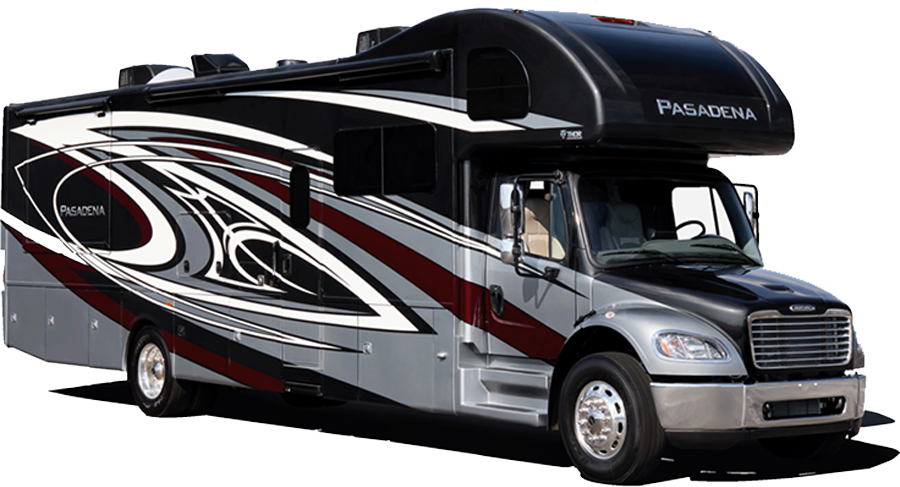

Pasadena and Inception are built exclusively on the Freightliner S2RV cab chassis, designed for consumers seeking the performance and power of a diesel pusher with the familiarity and convenience of a cab chassis. The front-end diesel chassis features a Cummins ISB-XT engine, outputting 360 horsepower and 800 lb.-ft. of torque.
Cockpit comforts include air suspension seats, a roadtrip-ready 10-inch touchscreen dash radio (with Apple CarPlay, Android Auto, Bluetooth, SiriusXM prep and back-up monitor display), side-view camera system, heated and remote exterior mirrors and keyless entry.
Pasadena and Inception are available in two floorplans: the 38BX bunkhouse layout and the 38MX bath-and-a-half model. Both floor plans feature luxurious living amenities, including washer and dryer prep, theater seating, Tilt-A-View king-sized bed, residential kitchen features and a large Dream Dinette.
Make it Dimmer
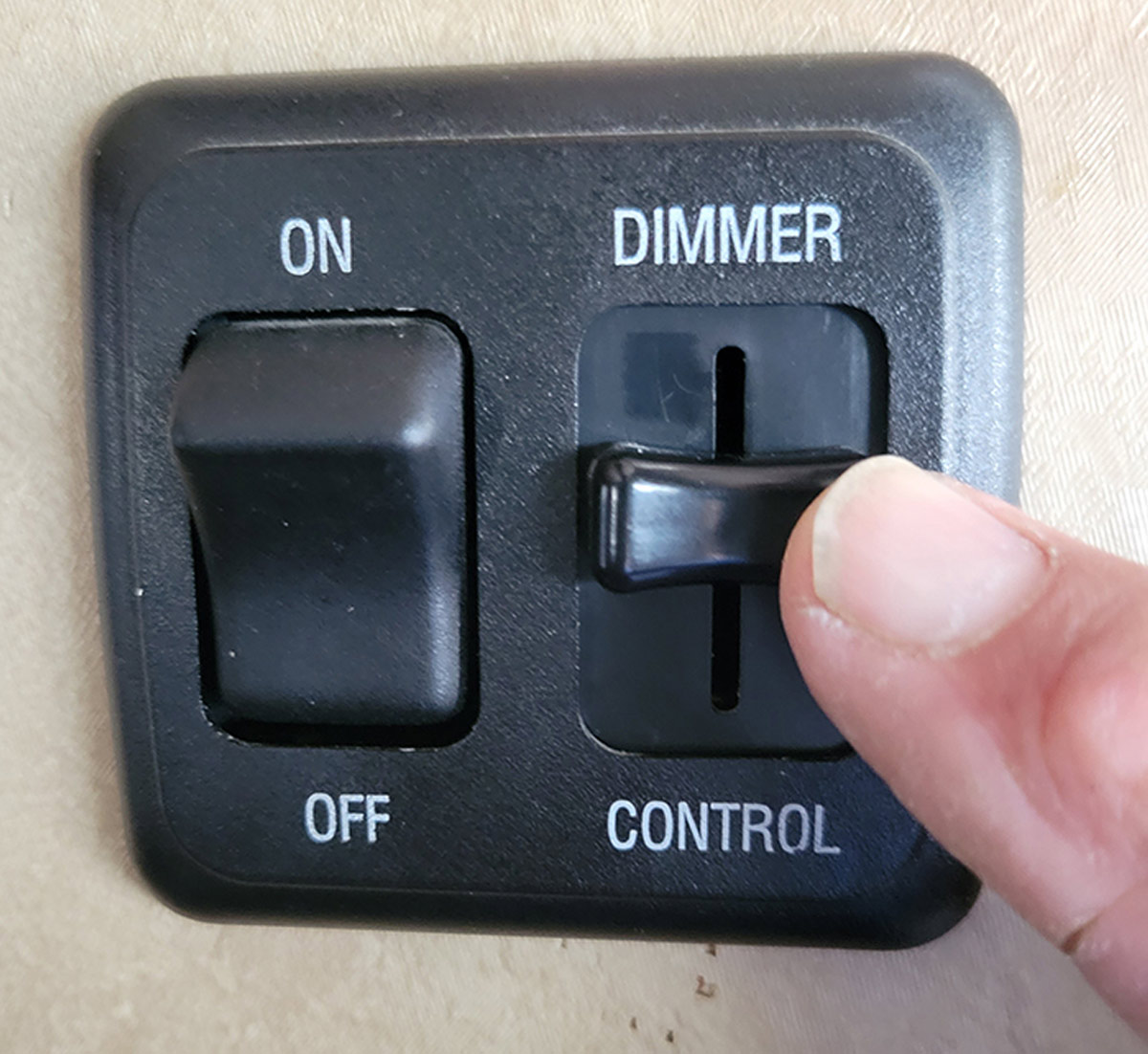
— Alan Gruend
Alan, you are not alone with this issue. The latest trend is to have multiple efficient, bright LED lights — and since they draw a small amount of current, it’s easy to string an entire bank of lights on the same small-gauge wire without causing an electrical overload. A great way to alleviate your problem is to install a dimmer switch, which is readily available on the Internet and is very easy to install. The dimmer switch will require a ground wire, which makes it difficult to replace the factory On/Off switch that’s built into the wall; there’s probably not a ground wire anywhere near that switch. The solution is to install a dimmer switch next to the first fixture in the string of lights and utilize the ground that runs to that light as well as the power-supply wire from the original wall switch.
Sponsored Content
Proven Products From Airxcel Brands
Dicor – Lap Sealant. Dicor’s lap sealants are compatible with EPDM, TPO and PVE membranes and adhere firmly to aluminum, mortar, wood, vinyl, galvanized metal, fiberglass and concrete. Products include Dicor’s HAPS- free Self-Leveling Lap Sealant — which creates a secure, secondary seal along the roof’s edges, air vents, vent pipes and screw heads — and Dicor’s HAPS-free, Non-Leveling Lap Sealant, which creates a secure, secondary seal along the roof’s edges and along termination rails. Ideally suited for aftermarket use, the lap sealant is one of the highest volume products sold in RV stores today.
Coleman-Mach – Air-Conditioners and Heat Pumps. Featuring some of the lowest profile shrouds to help with drag and aerodynamics, Coleman-Mach’s lineup includes its Quiet Series DQ (Ducted Quiet) and NDQ (Non-Ducted Quiet) rooftop air-conditioners and heat pumps expertly designed to deliver superior performance with operational noise reduction. The Quiet Series features medium- and low-profile black or white textured exterior shrouds, and — new in 2021 — polished exterior shrouds for select models.
The Quiet Series is also available in SOFTStart and PowerSaver models. The SOFTStart Series allows RVers to avoid damaging bursts of power from their RV’s air-conditioner by providing a seamless and steady slope of power allowing for smooth and safe acceleration and is especially useful for RVs with multiple A/C units. The MACH 10 NDQ features SOFTStart and 13,500 BTU/h of cooling power with ducted and non-ducted models — and is compatible with the latest digital and Bluetooth thermostats.


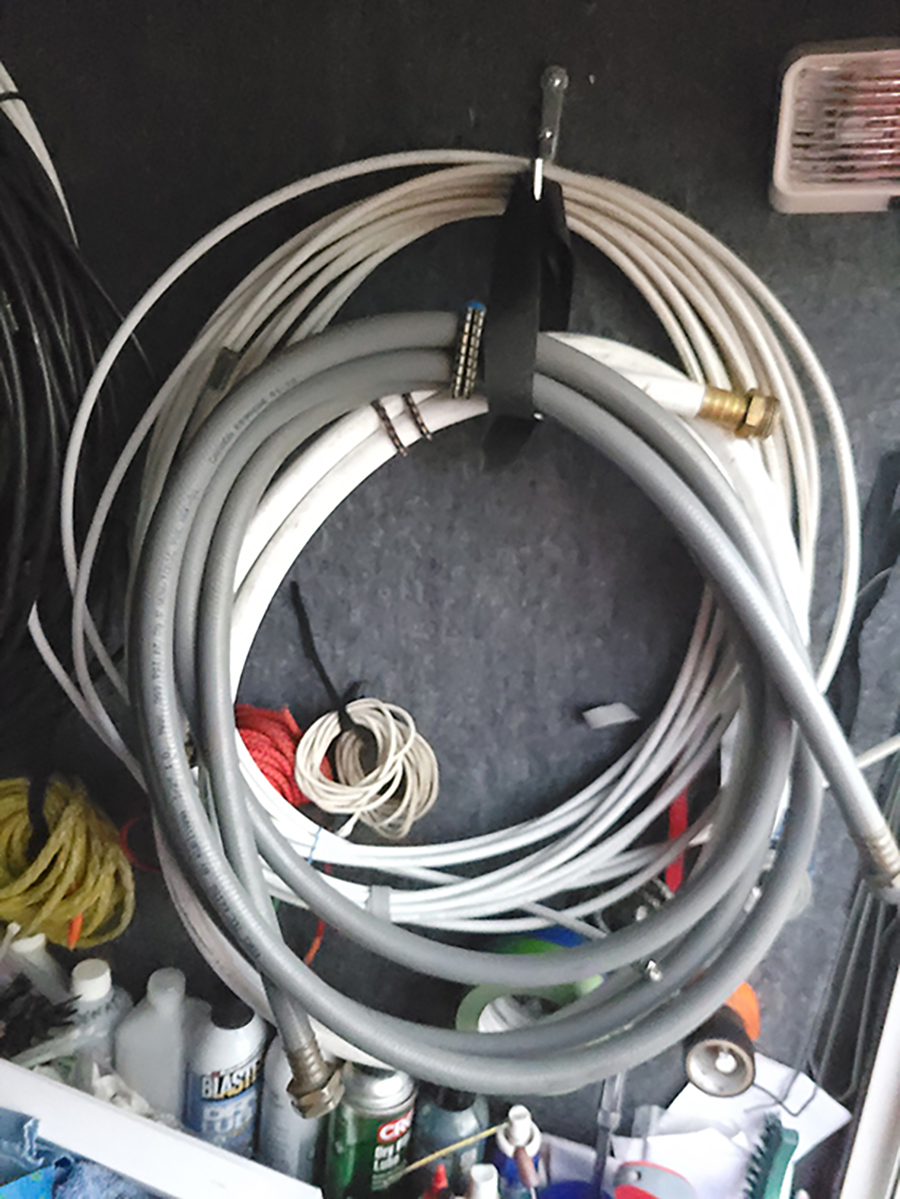

riving screws into RV paneling or a cabinet structure for the first time seems to present few issues. For the most part they will hold tight — but remove and replace the screw a few times (or add some weight) and the wood turns to sawdust as the hole becomes stripped and enlarged.
Window shades are especially vulnerable after multiple tugs on the material to pull them down — and forget about hanging heavy stuff on hooks. There are a few remedies that have been tired for years, such as stuffing a toothpick into the hole and re-setting the screw so the threads get a bite. This works, but not always, especially if the screw is holding something that sees heavy usage or is under tension. Of course, you can always use glue, but that’s not the best way to go unless you want the screw to be permanent.
A trick we found years ago is to use a self-drilling drywall anchor.

hen it comes to enjoying the RV lifestyle, there is absolutely one thing for certain: At some point the sealant/caulking on the roof of your RV — around the vents, TV antenna, accessories and other permanently mounted hardware — will start to fail.
That’s not the biggest problem, though. The real headache is that unless you go up on the roof and inspect the surface periodically before a leak is discovered on the ceiling or inside a compartment, you may not even know about it until it’s too late for a quick repair.
In most RVs, a little bit of water can stain a whole lot of area. And, of course, Murphy’s Law dictates that the leak is going to show up above your bed when you least expect it. Regardless of where the leak originates or where it shows up, the worst-case scenario leads to dry rot that you may not even see for many years — and mold can also become a serious health issue. Depending on the location, a leak left unchecked can cause extensive damage to the roof structure and the siding, resulting in expensive repairs and big-time inconvenience. The insulation in the walls and roof can trap the water for long periods of time since there is no air circulating in this area.

hether it’s a pop-up, travel trailer, fifth wheel or motorhome, most RVs have at least one item in common: self-containment. While it may be minimal in some cases and extensive in others, it means having everything necessary onboard to be independent from hookups for a few days — or even for a few weeks.
Known as dry camping or boondocking, spending time off the grid is appealing to those who prefer more natural surroundings — and get a kick out of the freedom afforded by being self-contained. We can camp in the midst of some of the most beautiful and special places on this continent. Our RVs are our tickets to versatility, from spending time in a primitive campground in a spectacularly beautiful national park or national forest, a few days in a friend’s driveway or the convenience of an overnight stay at a Harvest Hosts partner location. Being “unhooked” may be a once-in-a-while choice or a preferred way of travel rather than just visiting for a few hours and then departing to a site with hookups. And don’t forget the financial consideration, which has been top-of-mind now that sites are more expensive than ever — if they are even available when you want to travel.
Clearsource
Lance Camper
Lippert
United States Warranty Corporation
Way Interglobal
Advertise Today

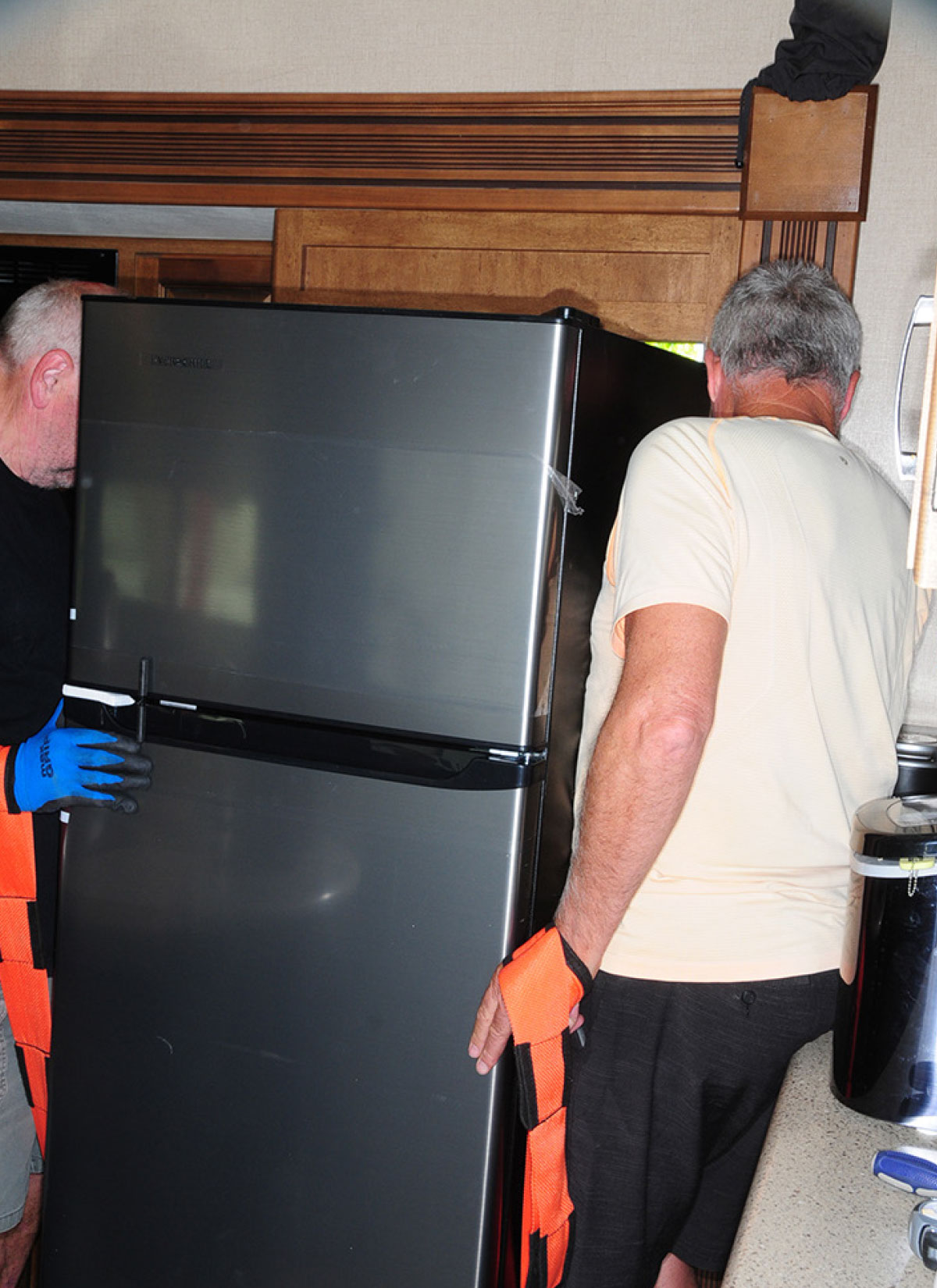
eeping food cold and frozen in an RV is quintessential to self-containment. Absorption refrigerators have been the appliance of choice for as many years as old timers can remember. But while these refrigerators have proven track records for off-grid performance — they can operate on LP-gas in just about any camping environment — they still don’t completely sever ties to civilization since those cylinders/tank will eventually need refilling. Then, too, there’s a growing segment of outdoor enthusiasts who just don’t want to carry propane.
Of course, advancements in on-board power technology have opened the floodgates for the use of 120-volt AC residential refrigerators in RVs — but the downside here when going off the grid is the need for a much more sophisticated 12-volt DC power system driven by large battery banks, big inverters and expansive solar systems.
Coming on the scene of late is the development of efficient 12-volt DC compressor-type refrigerators that work like their residential cousins — but are efficient enough to be installed in RVs with only a couple of batteries backed by a basic charging system. Elkhart, Indiana-based Way Interglobal (www.wayinterglobal.com) pioneered the move into the 12-volt DC refrigerator space and offers a number of Everchill models to the industry and aftermarket, earmarked for all RVs.

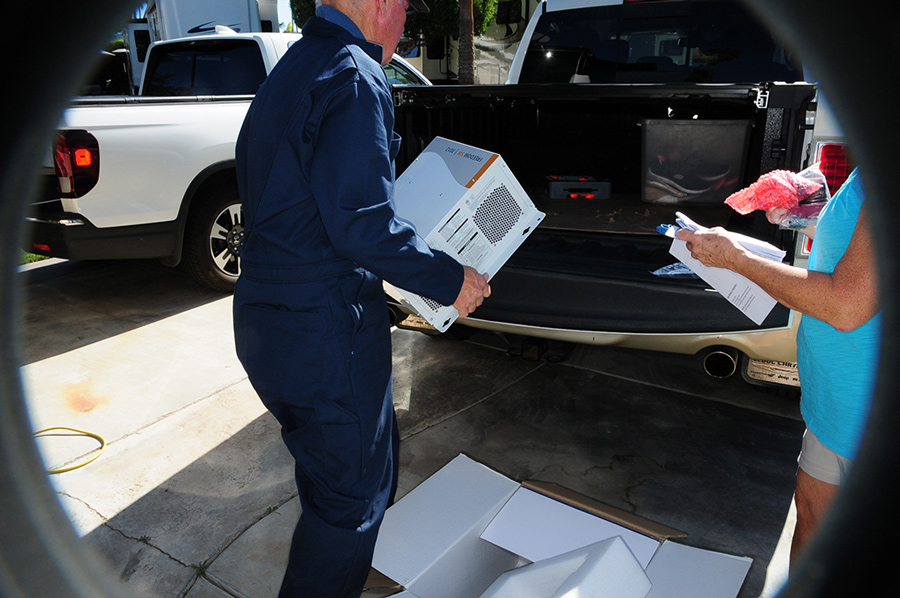


ears ago, having a inverter capable of providing maybe 150 watts of modified sine wave power was almost a novelty. I remember my first 100-watt inverter. It was packed inside a bulky aluminum housing and powered a small black and white TV (also a bit of a novelty for those of us who turned to RVing as an outlet for leaving our daily routines behind). Today, inverters are becoming standard equipment on many RVs — and combined with a powerful, smart battery charging circuit, are becoming indispensable, especially for those RVs equipped with residential refrigerators.
In fact, sophisticated inverter/chargers capable of conditioning lithium batteries and part of high-tech packages that run just about everything in an RV — sans an umbilical cord — are all the rage these days for those who relish boondocking. Many larger systems can even run air-conditioners, eliminating the need for noisy generators. The more elaborate systems will have a large 3,000-watt pure sine inverter, a big bank of lithium batteries and a significant array of solar panels.
But while most of the inverters on the market have decent lifespans, higher dependency on off-grid power can lead to inopportune inverter malfunctions — which can pretty much render the 120-volt AC electrical system kaput when camping without hookups and/or running the generator all the time. That’s exactly what happened to the owners of this 40-foot diesel pusher motorhome. And, as expected, it happened during an inopportune time: while on their way to their winter destination.
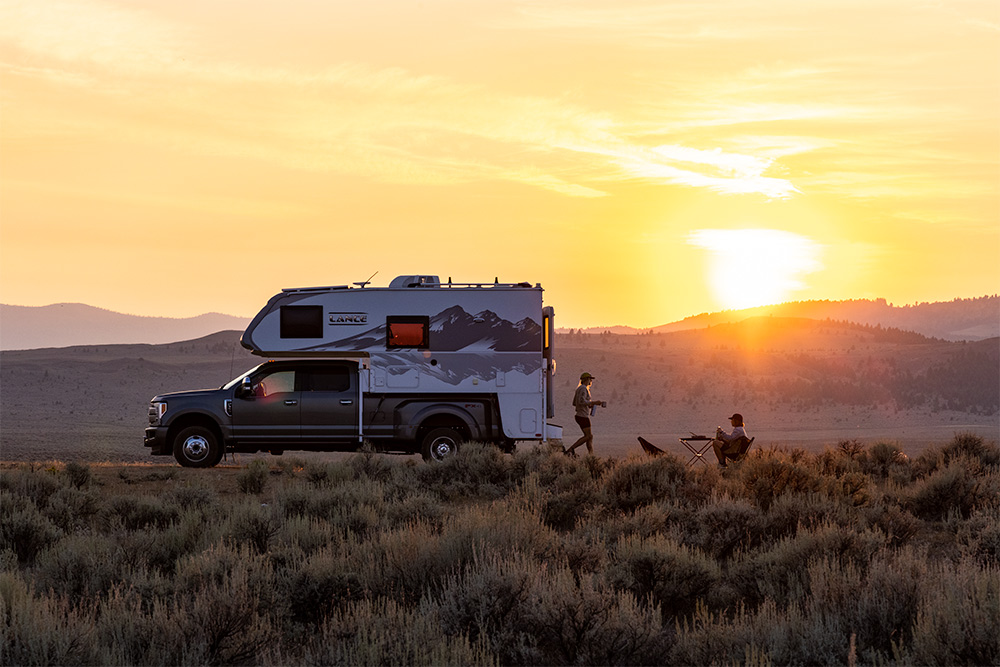
t’s said that hindsight is 20/20 — and the Go RVing campaign was, in retrospect, truly onto something when the promotional arm of the RV Industry Association (RVIA) and RV Dealers Association (RVDA) began focusing on the “experiential” aspects of the RV lifestyle several years back. Fueled by a younger audience looking to do more with an RV than set up in a campground, the campaign captured the essence of going off the grid in search of memories. In other words, boondocking.
In the seasons since, dry camping has become the biggest trend in the RV arena. And whether it’s fed by a drive to truly experience what nature has to offer or an alternative to sold-out campgrounds, boondocking has opened up new vistas as travelers rediscover state and national parks and locations off the beaten path.
It’s also charged a drive by RV suppliers to research, design and create a wealth of components to sustain those off-road excursions. Just a handful of years back, about the only industry developing products capable of being used with 12-volt DC power was the over-the-road trucking industry. Today, RVs are awash in appliances capable of being utilized without that once-critical electric umbilical cord. From 12-volt refrigerators and lithium batteries to “soft starting” air-conditioners, solar panel arrays and energy management systems, the products intended to maximize comforts while off the grid has expanded exponentially — and continues to grow.

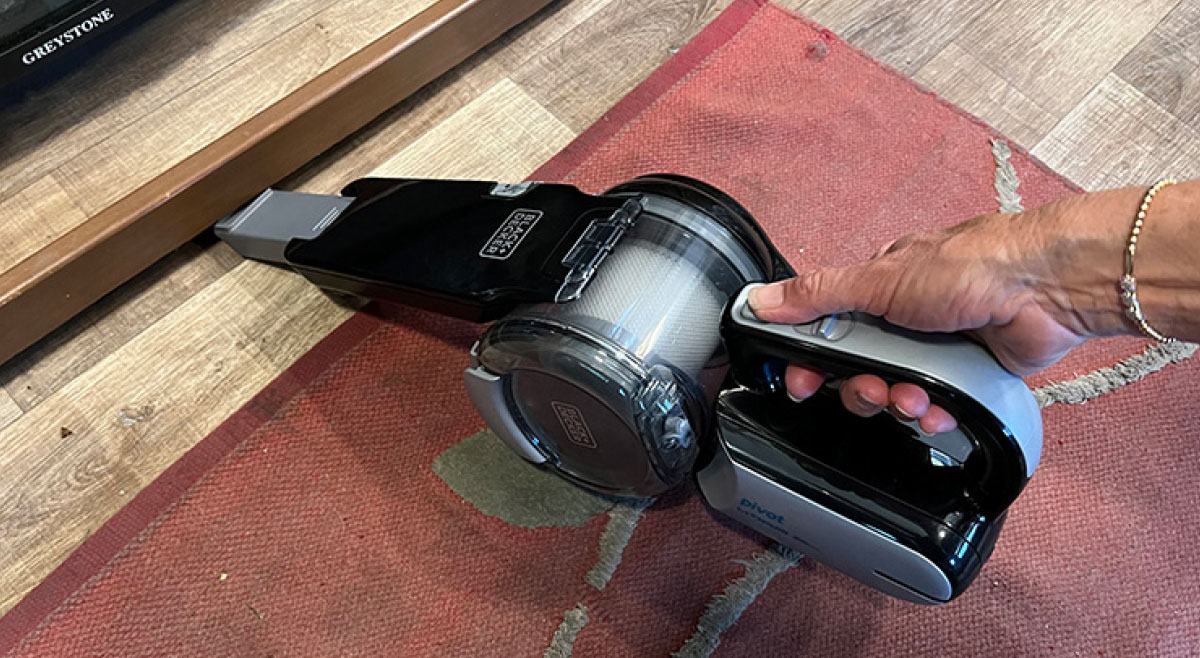
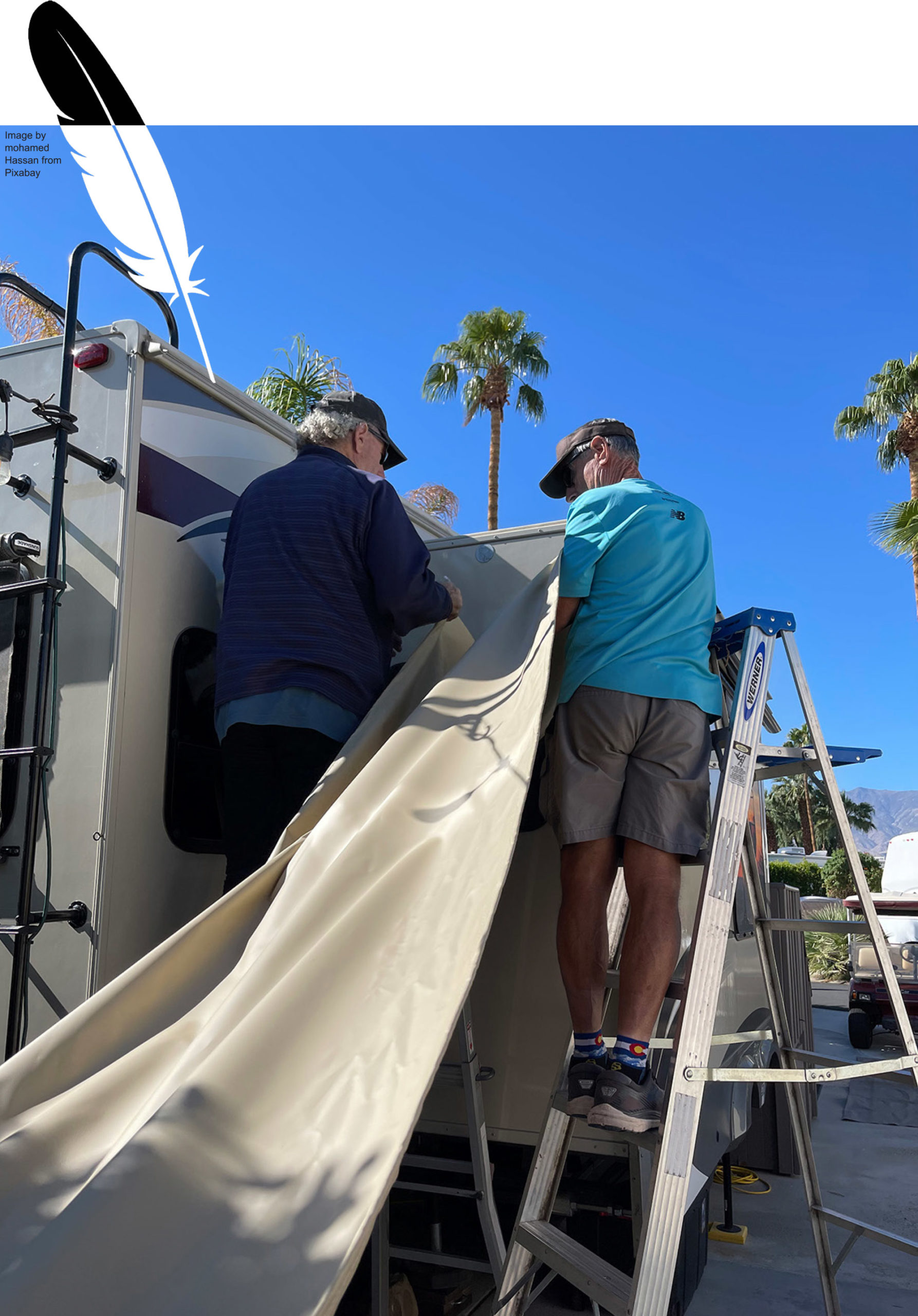
lide-out toppers play an important role when it comes to protecting an RV and are arguably one of the most abused accessories in the RV space. They shelter slide-out roofs from water intrusion and debris, quiet down the noise in rainstorms and generally improve the appearance of any RV. But slide-out toppers are always exposed to the elements unless they are retracted, and that’s only when the RV is in storage or on the road. The constant beating from strong winds will weaken the fabric — not to mention the cacophony of noise inside the rig — and eventually the material will tear, usually at the poly cord seam nearest the awning rail on the sidewall.
Last summer, the five-year-old acrylic fabric (the more expensive stuff) on all three slides in our fifth wheel were damaged beyond repair in a strong windstorm; within seconds, they were history.
Granted, over time any fabric exposed to the sun — and potential damage from branches and other debris that can collect on top when parked under trees — will weaken the material. Also, roller-tube springs that are not wound tight enough will allow the fabric to flop around, which will decrease longevity, as will ice, snow, hail and debris that’s allowed to roll up on the tube during retraction.



